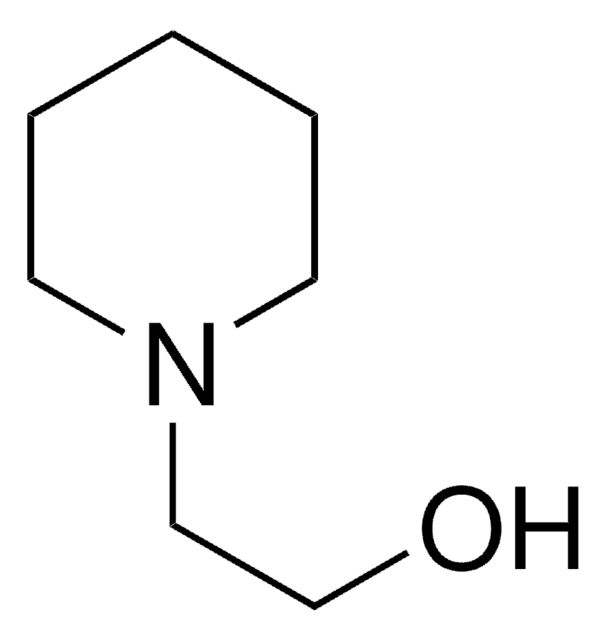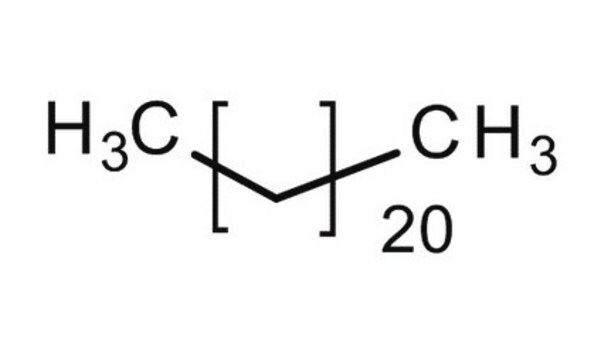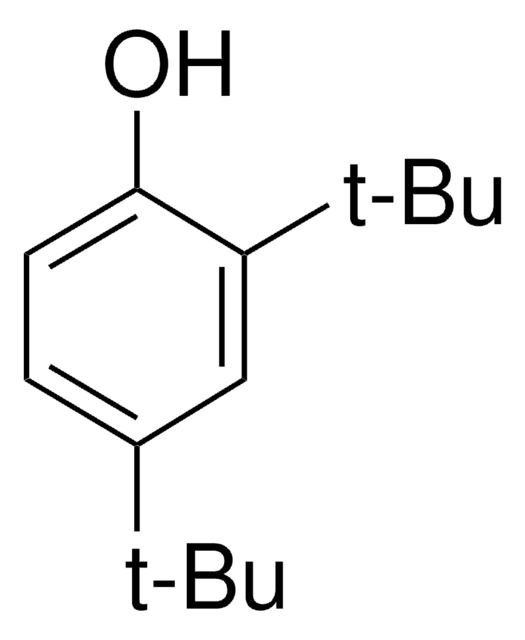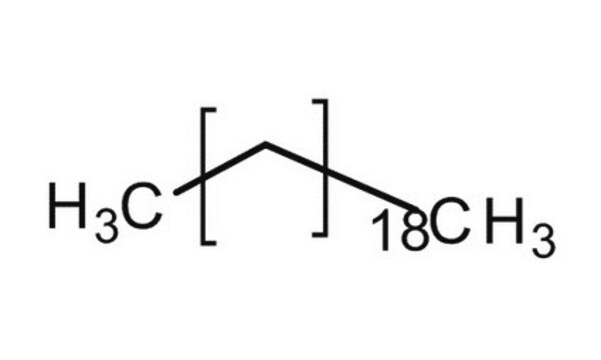134457
Docosane
99%
Sinónimos:
n-Docosane
About This Item
Productos recomendados
densidad de vapor
10.8 (vs air)
presión de vapor
<1 mmHg ( 21.1 °C)
Ensayo
99%
Formulario
solid
bp
369 °C (lit.)
mp
42-45 °C (lit.)
densidad
0.778 g/mL at 25 °C (lit.)
cadena SMILES
CCCCCCCCCCCCCCCCCCCCCC
InChI
1S/C22H46/c1-3-5-7-9-11-13-15-17-19-21-22-20-18-16-14-12-10-8-6-4-2/h3-22H2,1-2H3
Clave InChI
HOWGUJZVBDQJKV-UHFFFAOYSA-N
¿Está buscando productos similares? Visita Guía de comparación de productos
Categorías relacionadas
Aplicación
Código de clase de almacenamiento
11 - Combustible Solids
Clase de riesgo para el agua (WGK)
WGK 3
Punto de inflamabilidad (°F)
235.4 °F - closed cup
Punto de inflamabilidad (°C)
113 °C - closed cup
Equipo de protección personal
dust mask type N95 (US), Eyeshields, Gloves
Elija entre una de las versiones más recientes:
¿Ya tiene este producto?
Encuentre la documentación para los productos que ha comprado recientemente en la Biblioteca de documentos.
Los clientes también vieron
Protocolos
Separation of Decane; Dodecane; Tetradecane; Hexadecane; Octadecane; Eicosane; Docosane; Tetracosane; Hexacosane; Octacosane
Nuestro equipo de científicos tiene experiencia en todas las áreas de investigación: Ciencias de la vida, Ciencia de los materiales, Síntesis química, Cromatografía, Analítica y muchas otras.
Póngase en contacto con el Servicio técnico












